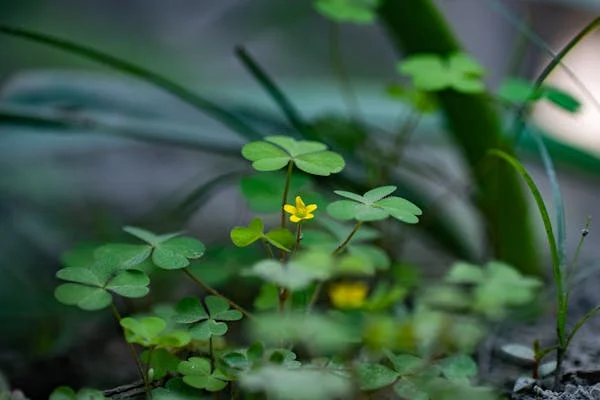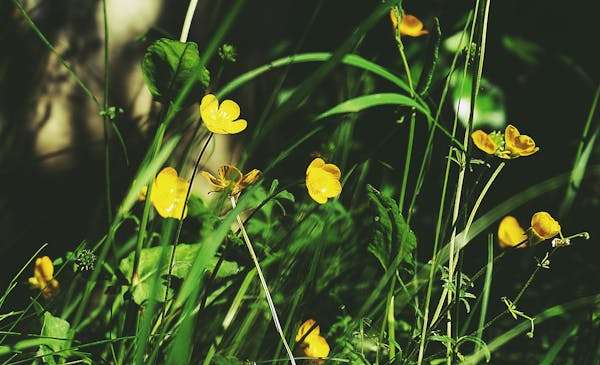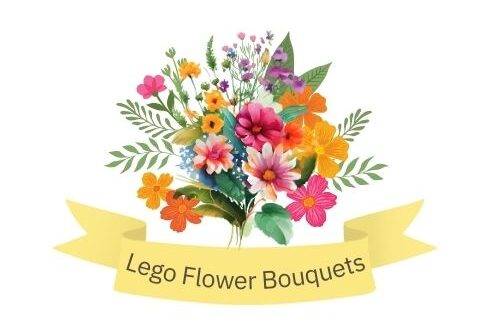Smooth patches of rather yellow flowers are often breathtaking; however colorful and bright they may be, these are the ugly signs of invasive weeds for the great number of farmers and owners of the land. What are Yellow flower weed in fields, and why are they difficult to remove from agriculture and landscape areas? The focus of this article is the identification of yellow flowering weeds prevalent in fields, assessing the effects of these weeds on crops and their environment, and measures of weed management.

What are Yellow flower weed in fields?
When asking what the yellow flower that grows in fields are, several species often come to mind. Let’s examine some of the most prevalent yellow-flowered weeds that invade fields across different regions:
1. Dandelions (Taraxacum officinale)
Since these plants exist, dandelion can be described as one of the most familiar yellow-flowering weeds in the field. These are hardy plants with spear-like or toothed leaves and specially modified, thin-walled tubular stems that emit a milky substance when crushed. Although most people view it as a weed, dandelion still has some benefits from the edible parts of the plant and possible medicinal functions.
2. Yellow woodsorrel (Oxalis strict)
Oxalis strict: A plant with a somewhat thin stem and leaves with a shape like a clover with small, five-petal yellow flowers. However, yellow woodsorrel looks quite harmless; it reproduces asexually through seeds and has underground stolons.
3. Buttercups (Ranunculus species)
Different buttercup plants are involved in specifying the yellow flower weed fields. They mostly have shining yellow-coloured flowers and deeply divided leaves.
4. Wild Mustard (Sinapis arvensis)
Wild mustard is easily observed in agricultural land. Its flower is yellow and has four petals like crosses. This weed can be difficult for farmers because it grows alongside crops and extracts nutrients and water from the ground.
5. Goldenrod (Solidago species)
It should be noted that goldenrod is not ragweed, although these plants are often confused. Goldenrod is a group of plants with small yellow flowers that form showy compound umbels. Depending on the situation, some see goldenrod as an important plant for bees and others as a nuisance.

Yellow flower weed in fields: Environmental Consequences
Identifying the plant as a yellow flower weed in fields is not enough; one must understand the plant. These plants can have significant ecological and agricultural consequences:
i). Competition with Crops
Most of the yellow-flowered weeds in fields can effectively rival the cultivated crops regarding the availability of fundamental things such as water, nutrients, and light. The influence is that this competition can cut down on the yields and quality of the crops to be produced.
ii). Habitat Alteration
Some yellow-flowered weeds contain food and feed structures for some wildlife species; on the other hand, they can become invasive species with undesirable effects on the native plant organization and modification of local ecosystems.
iii). Soil Health
Depending on the species, certain yellow flowering weeds in the field have a taproot system that influences the soil and nutrient arrangement. However, some may assist in avoiding soil erosion on occasions when necessary.
iv). Livestock Concerns
Some of the small, yellow-flowered plants, including specific varieties of buttercup, may be lethal if eaten by grazing livestock. This situation is dangerous for livestock farmers and requires particular attention to the pasture.
Some Advantages of yellow flower weeds in fields?
While often viewed as problematic, it’s important to consider that some yellow flower weeds in fields have positive attributes:
a). Medicinal and Culinary Uses
Some plants characterized as weeds, such as dandelion, have traditional uses in treatment and food preparation.
b). Soil Improvement
Some yellow flower weeds rooted deeply can improve the condition of compacted land by bringing nutrients close to the soil’s surface.
c). Biodiversity
In some cases, these weeds can be helpful to total plant species, which in turn boosts the stability of an environment.

How to get rid of yellow flower weeds in fields
For those wondering what the yellow flowers that grow in fields are and how to manage them, several strategies can be employed:
i). Mechanical Control
To control yellow flower weeds in the fields, mowing, tilling, or hand pulling should be done often. This method is most effective on annual weeds when used before the plant is established and before it produces seeds.
ii). Cultural Practices
If desirable vegetation or healthy, competitive crops are to be grown and nurtured, the yellow flower weeds will not have a chance to establish themselves. This includes aspects such as the right fertilization, the right irrigation, and the right crop succession.
iii). Chemical Control
Selective weed killers may combat yellow flower weeds in the fields, but the products should be well-chosen and used properly. Follow the product label and think about the impact on the surroundings.
iv). Biological Control
Certain insects that feed on such weeds or pathogens that affect the mentioned weeds can prove useful for yellow flower weeds in fields. This procedure should be conducted with much vigour and planning in research and practice.
v). Integrated Weed Management
Multiple techniques often stimulate the best outcome regarding yellow flower weeds in fields. This is the basis of this holistic ideology of a weed management strategy, in which a view is taken of the particular weeds, the field’s state, and the weed control’s objectives.
vi). Prevention
One of the guidelines recommended for farmers is to ensure that no yellow flower weeds are introduced into the fields or spread to cover a larger portion of them. This involves cleaning equipment, using weed-free seeds, and observing the edges of the fields and disturbed areas.
Regional variations of tall weeds with yellow flowers
Different kinds of yellow flower weeds found in fields depend on the region, climate, and usage of the field. For example:
i). Wetlands and Riparian Areas
Some plants with yellow flowers include the yellow flag iris (Iris pseudacorus) and marsh marigold (Caltha palustris), likely to become weedy in wet habitats.
ii). Agricultural Zones
Crop fields may be threatened by nutsedge (Cyperus esculentus) in the United States or wild radish (Raphanus raphanistrum) in Australia.
The regional variations define the type of intervention applicable to yellow flower weed in fields in a particular region.

Yellow weeds in fields: Future challenges for the organization:
As we continue to grapple with what yellow flower weeds are in fields, several emerging challenges and considerations come into focus:
a). Climate Change
Climate change can affect the growth location and degree of competition over yellow-flower-bearing weeds in the fields based on changes in temperature and precipitation levels.
b). Herbicide Resistance
There are yellow-flowered weeds that have become resistant to many of the standard herbicides, meaning that other controlling strategies are required.
c). Changing Perceptions
As more people understand native plants and the importance of pollinators, there may be a reconsideration of what weeds within fields characterized by yellow flowers entail.
d). Precision Agriculture
In the future, improvements in technology may enable nearer-accurate treatment of yellow flower weeds in fields, thus decreasing the application of a total quantity of hasty weed killers.
Conclusion
This is a rather ambiguous question for which there are equally broad and varied answers: yellow flower weed in fields. Although these plants also create several problems concerning agriculture and other kinds of land use, they have their own ecosystem functions and may present some advantages. Recognizing the varieties of yellow flower weeds in fields, their effects on the order’s production, and the proper courses of action to control these survivable species will become the sustainable way to live together with these weeds.
In this view, the relative perception of yellow flower weeds in fields and how to control them will always remain a dynamic subject, given the progressive development of knowledge and the discovery of new problems and issues. Thus, in the light of constant scientific progress, by being aware of potential risks and applying the most effective solutions, we can never compromise the positive aspects of biodiversity in our fields and landscapes by invading such critical weeds.
FAQs
Q. Are there possible benefits to yellow flower weeds in fields?
Some weeds are yellow, and we can benefit from them somehow. It may feed the pollinators, support nesting and breeding, protect the soil from erosion, or offer excellent and healthy value-added uses that are medicinal, culinary, etc. Some of it, such as dandelions, can also point to the nature of the soil.
Q. What can I take out of my fields with yellow flowers that are considered weeds?
Loosening often requires analyzing the structure in its broadest form, the shape of the leaves and petals, and the general appearance of the plant’s body and its growth. Local universities, extension services, plant clinics, or colleague recommendations for the best field guides on agriculture.


